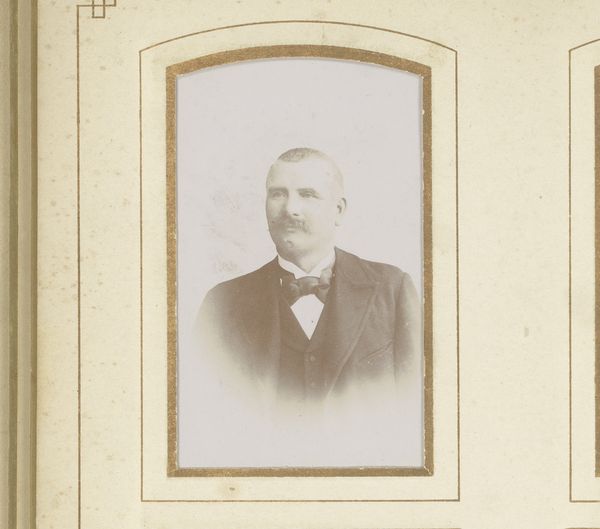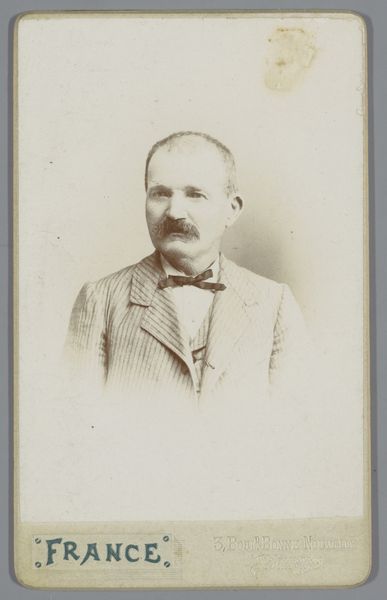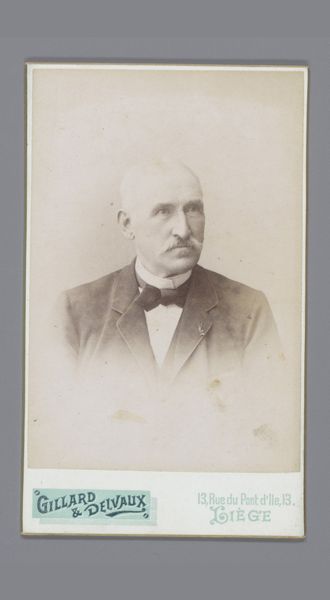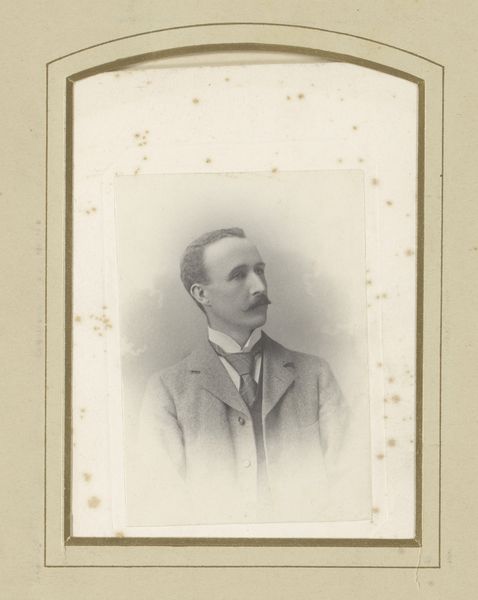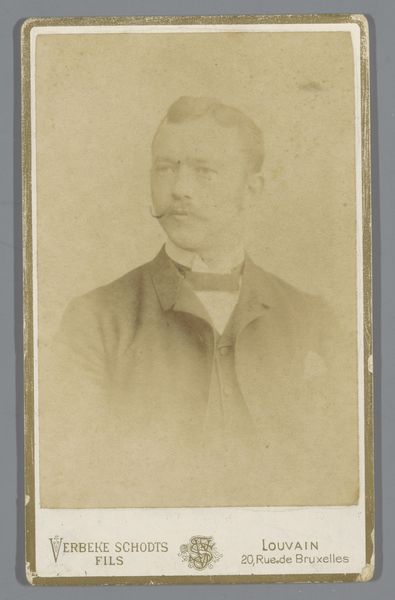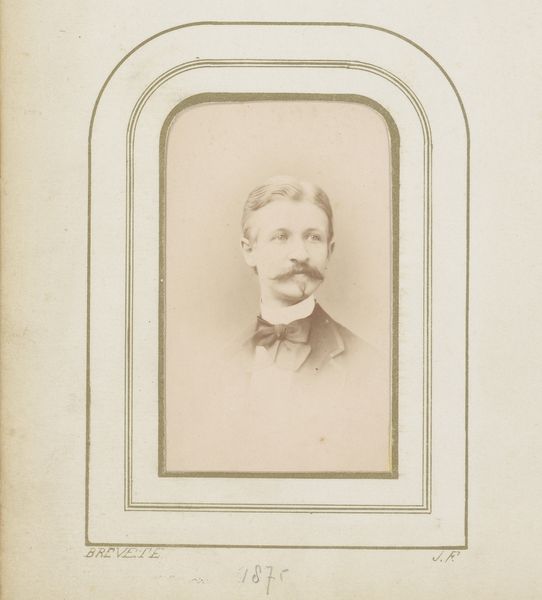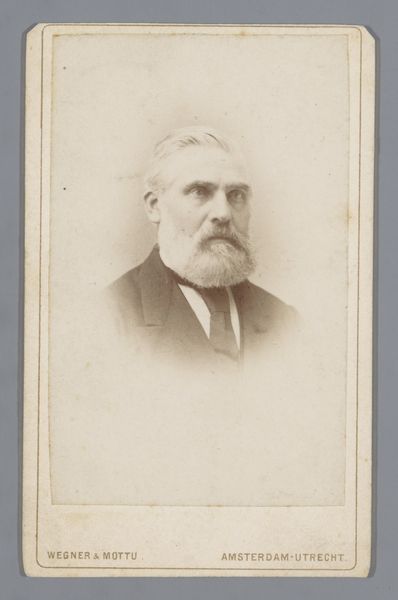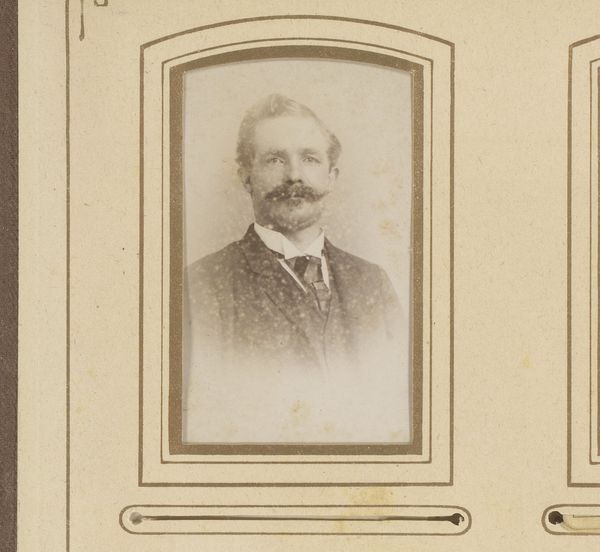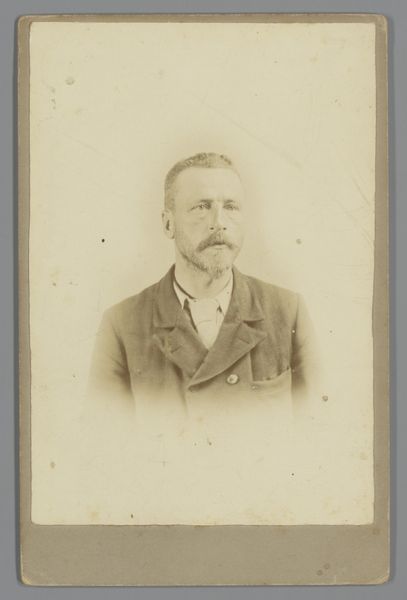
photography, gelatin-silver-print
#
portrait
#
aged paper
#
photography
#
gelatin-silver-print
#
portrait drawing
#
modernism
#
realism
Dimensions: height 137 mm, width 97 mm
Copyright: Rijks Museum: Open Domain
Editor: We're looking at a gelatin silver print, a photographic portrait from sometime between 1890 and 1920, titled "Portret van Edouard Ernie." It's a fairly conventional portrait, but there's something about the soft focus and aged quality of the print that gives it a dreamlike feel. What historical contexts shape how we view portraits like this? Curator: Well, portraits in this period become fascinating documents when considered through the lens of social history. Photography had become more accessible, democratizing portraiture, once the domain of the wealthy who could commission paintings. But who had access to studios and who were these photographers? Were they catering to the rising middle class, constructing very specific visual identities? Editor: So, it's not just about capturing a likeness, but about creating a certain image for public consumption? Curator: Exactly! Think about the subtle choices: the pose, the clothing, the backdrop if there were any. All meticulously curated. Even the soft focus might reflect a desire to emulate the aesthetics of painting, to elevate photography as a form of art, legitimizing it within established cultural hierarchies. How did modernism challenge these established codes, I wonder? Editor: That makes me consider this in relation to a lot of social and economic issues happening at the time! I definitely appreciate understanding portraits like this not just as individual representations, but as reflections of larger societal trends. Curator: And also power structures within those trends. It shifts our focus, doesn't it, from individual genius to collective influence, highlighting the complex relationships between art, society, and the people who create and consume imagery.
Comments
No comments
Be the first to comment and join the conversation on the ultimate creative platform.

